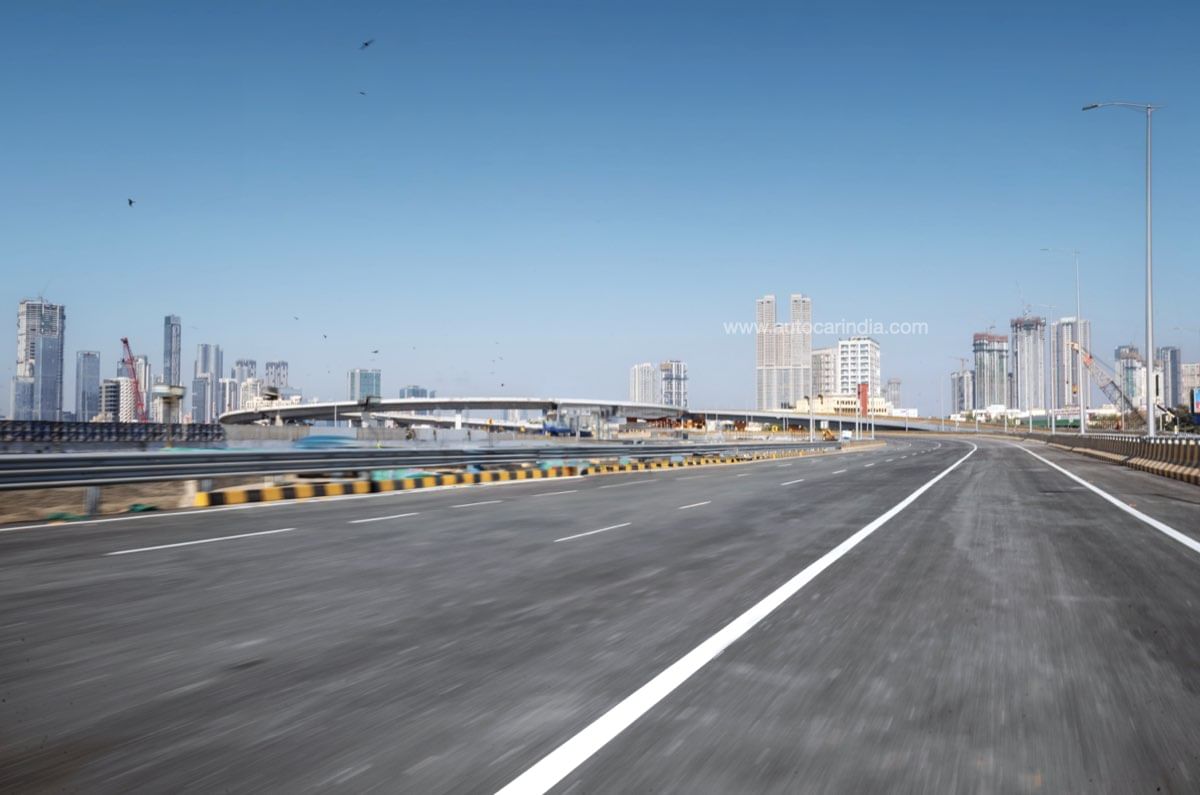Feature: How much time does Mumbai's new Coastal Road save?
A race through Mumbai traffic from Bandra to Marine Drive in an MG Comet and Hyundai Tucson helps us find out.
Published on May 04, 2024 08:00:00 AM
20,402 Views
To our readers outside of Mumbai, we apologise. Let there be no doubt, we had an absolute blast last month letting a Lamborghini V10 sing its greatest hits through the acoustic chamber that is India’s first undersea tunnel – part of Mumbai’s Coastal Road project. But we concede that some of you who don’t live here, engineering feat aside, might have wondered what all the fuss was about. Allow us to explain.
In other big metros, huge road infra is not unusual; heck, the average service road in Delhi is wider than parts of our Western Express Highway. For us Mumbaikars, then, a big new road is nothing short of a revelation. The reason is simple – Mumbai is a collection of islands, conjoined artificially, that snakes southward in a roughly peninsular shape parallel to mainland India. And it’s narrow, dense and heavily built up, which is why we can’t have wide roads or endless flyovers. The Coastal Road project posits the solution of transplanting the highway alongside the city, in the Arabian Sea no less; and for the 2km stretch we drove last month, underneath it.

For now, the only part of this ambitious new project open to the public is the southernmost section, connecting the hub suburb of Worli to the Princess Street junction at Marine Drive, just before the busy business district of Nariman Point. Eventually, the Coastal Road will join up to the northern suburbs as well, but even this small patch is said to have eased up congestion considerably on this final leg of the officegoer’s commute. But just how much has it eased up?
We’ve decided to drive the new road simultaneously with the old, during rush hour on a weekday, to see just how much of a difference it makes, and I’ve drawn the short straw in what is undoubtedly a one-sided race. Nikhil Bhatia will be commandeering a Hyundai Tucson across the Coastal Road. I, meanwhile, will be reaching Nariman Point the way countless Mumbaikars have for decades, but in anticipation of the impending gridlock, I’ve chosen an MG Comet as my steed. No amount of extra horsepower can get you through Mumbai faster, but a smaller car certainly can.
The clock reads precisely 9:21am as both cars spear off from Bandra West, via the Bandra-Worli Sea Link bridge. Opened in 2010, it’s the original Coastal Road, and will be an integral piece of the completed project. It bypasses a huge chunk of traffic, but at rush hour, it’s also the biggest bottleneck in town, as four southbound lanes merge into two and end in a T-junction, commuters jostling recklessly to get ahead. The crowd builds up on Worli Sea Face, as we get closer to the sole on-ramp for the new road, and then, the moment of truth as our two cars split off from each other at 9:50am. Now the race is really on.
It’s Nikhil’s first time on the new road and suffice it to say, the sheer magnitude makes it a little distracting. The two-lane on-ramp takes a cautiously wide and gentle curve, and moments later comes a sight none of us have ever seen before. It’s our familiar city from an entirely different angle and perspective, and not since the Bandra-Worli Sea Link opened 14 years ago have we been hit with such a sense of novelty. He’s also having to remind himself that the speed limit has gone up to 80kph, which was thus far unheard of in the heart of the city, and possible thanks to the 3-lane width of this new road.
Moments later, he’s soaring past the NSCI stadium and Mahalaxmi Race Course on his left, and water-locked Haji Ali Dargah is below him on the right. This is proving to be less a race, and more an exercise in time travel. All around, one can see new on-and-off ramps ribboning into view and joining up with the main road, the impact of which is only amplified by the sea all around. Even at this early stage of development, you can see the new walking promenade and parks being built alongside, which should add some greenery to this monument in concrete.
Next thing you know, the final off-ramp to Breach Candy (and several other affluent SoBo neighbourhoods) flits by, and in the distance, the mouth of the tunnel appears. That can’t be right. Nikhil checks his watch in disbelief, and indeed, it’s only 9:55am. Five minutes from Worli to Breach Candy! Yes, there’s a bit of traffic now as all the tributaries have joined the river, but it’s hardly what you’d call bumper-to-bumper.
The speed limit drop from 80 to 60 in the tunnel feels agonising, especially when we saw what a Lambo unleashed felt like just last month. But then, as they hop onto Marine Drive where the old and new roads meet, the traffic is back! The final 2km is the same as it ever was – a crawl past Wankhede and Brabourne stadiums into the crowded business district and our destination. Still, it must be better than the classic route, right?
Well, no actually. Having broken off from the Tucson at Worli, the Comet and I are buzzing down past the Nehru Science Centre, with only a few meandering cabbies slowing us down. I drive past the second on-ramp to the new road that I’m tempted to take, but of course, I can’t. From this angle, too, seeing the ‘spaghetti junction’ of ramps over the bay is an astonishing sight; the horizon I’ve grown up with is altered forever. But even amidst the wonder, I can’t help but realise, I’m making good time. It’s at the popular Heera Panna shopping centre junction that I realise my biggest downfall will be stop lights, and every moment sitting still reminds me that the new road is signal free.
But then, the moment of truth as I approach perhaps the biggest hurdle of all – Peddar Road – at 9:58am. Infamously jammed every morning and ringing with the cacophony of horns, I can understand why the late great Lata Mangeshkar fought against more traffic running through here. But as I reach the traffic lights outside Cadbury House, I’m in shock! As I ascend the traffic-free hill, I’m checking to make sure I’ve got the day and time right – I haven’t seen it this empty on a working weekday in the last decade. 10:03am and I’m clear; maybe I still have a chance.
It’s a similar story at Girgaum Chowpatty at the start of Marine Drive and, a few pesky traffic lights aside, I’m past the Taraporevala Aquarium in no time. But as I cross the mouth of the tunnel that Nikhil has surely come through a while ago, I’m in the same jam he was. Perhaps the Comet’s tiny footprint will buy me a few minutes, but I doubt that will make a difference. As I make it to the end of Marine Drive, I’m expecting a smug-faced Nikhil to be ready with a quip in one hand and maybe a celebratory snack in the other, as he’s wont to do in these situations.
Instead, I find him still in discussion with the photographers and crew, preparing them for the money shot of my arrival – something they thought wouldn’t happen for a while longer. I see visible bewilderment as I park alongside the Tucson and step outside. “Did you also take the Coastal Road?” Nikhil asks. Surely it wasn’t that close; 15 minutes apart? 12?
“Six,” he mutters, as we all look at our watches to confirm. I’m quickly interrogated on matters of speeding, rash driving and running stop lights, but I’m cleared of all accusations. Now, given the scale of the project, six minutes saved doesn’t seem like a lot, but there are two things to note. Only a few on- and off- ramps are open, and once fully functional, smoother movement will mean more time saved. And secondly, both routes were relatively empty, meaning the traffic has been split evenly, which is a win-win for commuters and SoBo residents alike. Just hope they sort out the bottleneck at the end of the tunnel.
Also see:
Howling through the Mumbai Coastal Road Tunnel in a Lamborghini Huracan Video
Driving on Mumbai Trans Harbour Link video
Copyright (c) Autocar India. All rights reserved.


